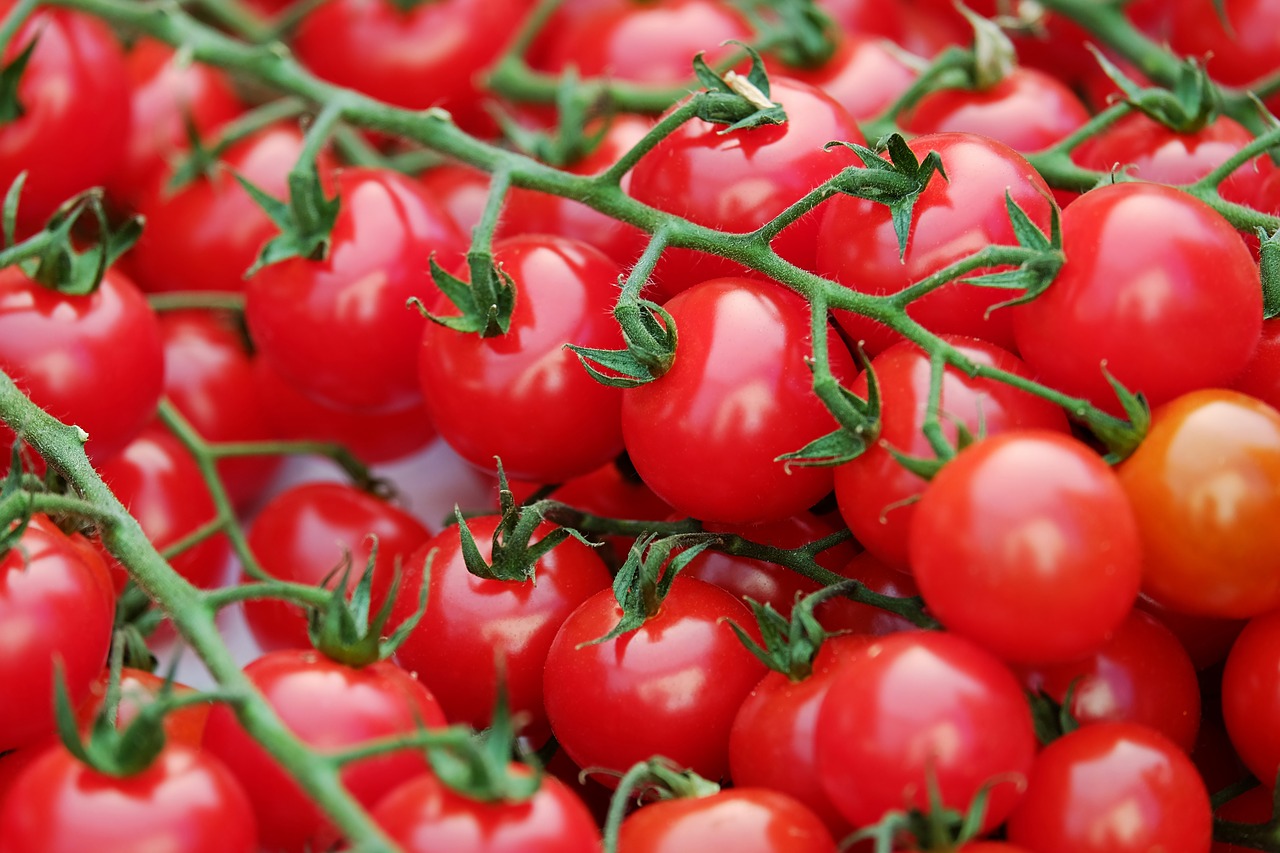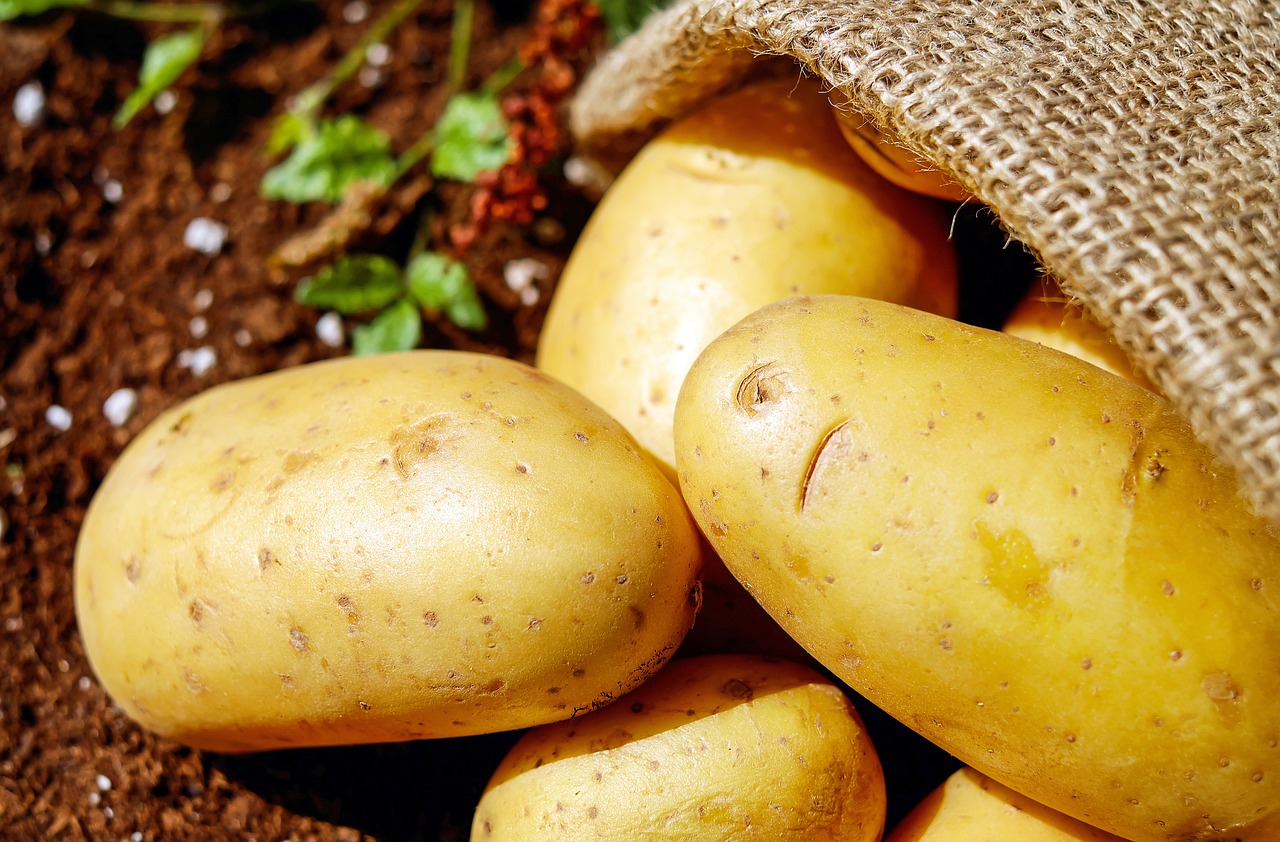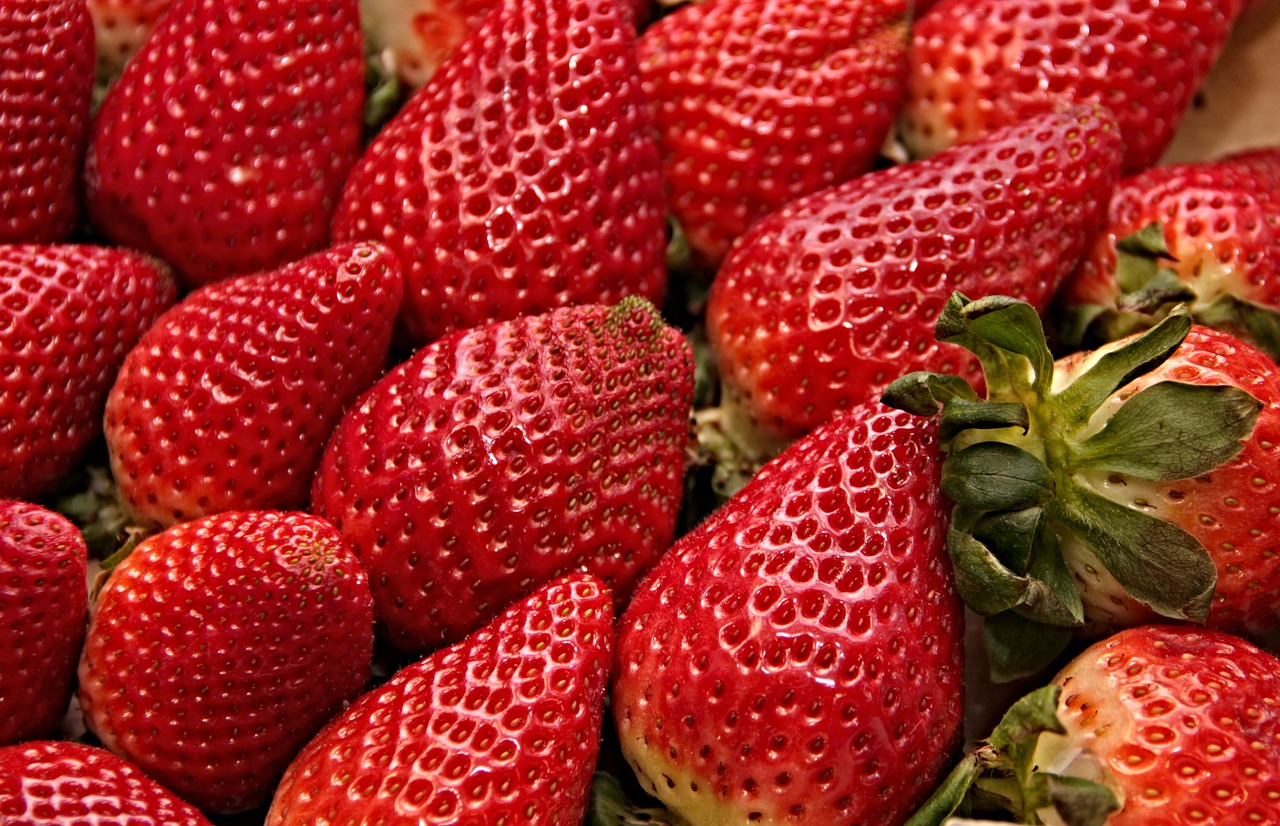How Many Straw Bales For Garden Layout
Have you heard of the term 'straw bale gardening?' It's a fantastic gardening method where you get the straw bale to begin to compost.
From there, you plant your vegetables within the straw bale, and because they are growing in compost, the plants have a high success rate.
It's also an easier method for growing a small garden instead of having a garden in the ground. These are all reasons why people are trying this idea.
However, there are some plants which grow better in a straw bale than others. I want to discuss with you which plants you should intend to grow in your straw bales and which won't be the best fit for this type of gardening.

Here is what you need to know:
Worst Plants for Straw Bale Gardens
There is only one plant which is a definite no-no when planting a straw bale garden – regular sized corn.
The problem with growing corn in a straw bale garden is it will get too tall which will lead to either the corn breaking off from lack of support, or it destroying the straw bale under the weight of the plant.
Also, your corn is more prone to wind damage because of how tall it grows. Add a few more inches to its height by growing it in a straw bale, and you have a real problem on your hands.
To avoid these hassles, it's a good idea to avoid planting regular sized corn in a straw bale.
However, if you're new to gardening in a straw bale, it's advised to avoid plants which sprawl until you become comfortable with this method of cultivation.
The reason to avoid sprawling plants, such as cucumbers, pumpkins, melons, squash, etc., is because they can be hard to contain in a straw bale garden.
You can stake them up to force them to grow vertically rather than horizontally, but the first year or two of straw bale gardening will have the challenge of learning how to grow with less square footage.
Once you get the hang of managing the size of the straw bale, you'll be ready to branch out into sprawling plants.
Best Plants to Grow in a Straw Bale Garden
There are certain plants which grow better in certain conditions. When starting a new gardening technique, it's a good idea to know which plants are going to work best using this technique.
Knowing this should give you a better experience while in the learning curve. Here are the plants which grow best in a straw bale garden:
1. Tomatoes

Tomatoes are cheap to grow but expensive to purchase from a store. Therefore, if you can produce tomatoes, you should.
The great news is tomatoes grow well in straw bales. Smaller varieties do particularly well because straw bales have less square footage to work with than the larger types.
However, if you want larger tomato varieties (like the beefsteak tomato), you'll need to plant less to give the fruits room for proper airflow.
2. Root Vegetables
Root vegetables can be difficult when growing them inground because they need the dirt to be loose enough so they can maneuver and grow deeper into the ground. This isn't ideal for all soil types.
However, if you grow root vegetables in raised beds or straw bales, the soil is looser and more accessible for the root vegetables to grow in.
It's important to make sure you reinforce the straw bales with wire or fencing because as the root vegetables push deeper into the straw bale, it could cause the bale to collapse.
3. Potatoes

Potatoes are another vegetable which can be complicated to grow inground. The biggest struggle is keeping the potatoes covered.
With straw bale gardening you don't have to worry about this. The straw tucks right around the potato plant and keeps everything covered as the plant prefers.
Also, it's easier for the plant to push down and grow under the top layer of straw because straw bales are more accessible to push through than hard soil.
4. Strawberries

Strawberries love nitrogen. This is why they grow exceptionally well in straw bales. Before the bales are suited for planting, they are hosed down with water and have fertilizer applied to them.
When they are finished composting, you plant in them. This is a great place for plants which need a great deal of nitrogen.
In turn, they grow well. Keep in mind, since everything you plant in a straw bale is an annual if you want excellent strawberry production, choose your varieties wisely and cut new shoots off of the plant to encourage the first shoots to produce more fruit.
5. Eggplant
Eggplants are another excellent option for growing in your straw bale garden. They belong to the nightshade family, and nightshades all seem to do well growing in straw bales.
The plants need space to produce their larger fruits, but they grow vertically instead of sprawl out which makes them an excellent fit for this type of gardening.
6. Peppers
Peppers are another excellent choice for your straw bale gardens. They give a decent harvest, which makes growing them worth your effort.
However, they also grow vertically which makes them an excellent option for a compact growing space such as straw bale gardening.
Plus, there are many varieties of peppers. You could have quite a bit of variety in a smaller gardening location.
7. Lettuce
If you're worried you won't get much out of a straw bale garden because straw bales are small, you shouldn't.
Instead, you should grow plants which will give you variety and also produce high quantities as well. Lettuce is a good option for this.
You can plant lettuce every two weeks to make sure you don't get flooded all at once. Also, you can grow different varieties of lettuce to keep things interesting in your garden. Plus, lettuce produces a nice harvest too.
8. Spinach
Spinach is a delicious superfood which is expensive to purchase at the grocery store but is very inexpensive to grow yourself.
For this reason, you should consider growing it in your straw bale garden. You don't need much square footage to have the harvest you desire.
Plus, growing spinach is an easy process which will give you a healthy food for little money.
9. Kale
Kale is another superfood which is excellent for you, and we all should eat more of it in our daily diets. What better way to make sure you eat more of what you need than growing it yourself?
Well, you can with your straw bale garden. Kale is a leafy green meaning it takes up very little room when growing.
This equates to it being perfect for your straw bale garden because you can get a nice harvest in less square footage.
10. Garlic
Growing garlic is easy. It's great to have what you need at your fingertips at any time because you grow it yourself ahead of time.
With this in mind, garlic is also a smaller crop to grow. It would fit perfectly in your straw bale garden.
Keep in mind; you'll get a decent harvest as well because plenty of garlic can be grown in a small location.
11. Chard
Chard is another leafy green we all need to take advantage of. What I love about chard is you can also purchase seeds for rainbow chard.
I love eating different colored food because I know I'm taking in more vitamins. You can grow more vitamins in your straw bale garden by merely growing chard.
It doesn't take up much room but will give you a more significant quantity of produce.
12. Basil
Did you consider making your straw bale garden a herb garden? If not, you need to consider it now.
The reason is basil grows well in straw bales. It has the perfect growing conditions for it, and where basil is compact, it is a great fit for a straw bale.
13. Cilantro
Cilantro is another common herb people like to grow in their herb gardens. If you're gardening in straw bales, consider adding it to what you're growing.
Again, straw bales offer the right growing conditions for cilantro, and because it's a compact plant, it should work out well.
14. Parsley
Parsley is another herb choice for your straw bale garden. Many people like to have their herbs near their kitchen where they can easily access them while cooking.
Well, when growing them in a straw bale, this is still possible. If you love to add parsley to your dishes, plant it in a straw bale garden near your back door.
It should grow well in the bales, as long as it's getting proper amounts of sunlight, and you'll still have the convenience of having herbs on hand.
15. Cauliflower
Cauliflower is a plant which likes cooler temperatures. As the weather heats up, cauliflower will begin to die down.
Meaning, you can grow them well in straw bales. They enjoy the growing conditions of the straw. Be sure, however, you plant cauliflower at the right time for your zone.
16. Broccoli
Broccoli is another plant which prefers cooler temperatures when growing. As long as you plant it for the right time with your zone, you should have quite the harvest in your straw bales.
Also, since broccoli grows more compact, you should be able to produce a solid amount for a nice harvest in your straw bales.
17. Cabbage
While we're talking about plants which prefer to grow in colder temperatures, I should mention cabbage is another good growing option for straw bales.
They love growing in the composted and fertilized straw because it provides the right growing conditions. These conditions are much easier to control in straw bales than in natural in-ground gardens.
Again, as long as you plant cabbage during the right time for your zone, you should have a nice crop.
18. Beans
Beans are nitrogen lovers. They have a hard time growing in in-ground gardens because the ground is naturally deficient in nitrogen.
When you grow beans in straw bales, the conditions are more accessible to monitor and control because of the smaller grow space.
With this in mind, the beans get the desired nutrients and thrive in the conditions. This equates to a more abundant harvest for you.
19. Peas
Peas are another plant which does well in straw bales. You may have to stake them up depending on how high they grow.
However, it takes many pea plants to get a decent harvest for more than eating a few as a snack. If you have enough straw bales, you may have enough to enjoy them.
20. Brussel Sprouts
I love Brussel sprouts. It's funny to me how they have such a bad reputation, yet they are delicious! If you like Brussel sprouts too, you'll be glad to know you raise them in straw bales.
Again, these are plants which enjoy cooler temps. Be sure you check your time to plant by the zone in which you live for best results.
21. Beets
Beets are a common root vegetable which you either love or you hate. Regardless, they're easy to grow in most conditions.
Growing them in straw bales is no exception. If you'd like a hearty crop to enjoy, consider adding beets to what you grow in your straw bale garden.
22. Annual Flowers
Annual flowers are a great addition to your straw bale garden because they take up very little space when growing. They flourish in this type of setting and will make a beautiful garden in no time flat.
Plants to Try Once You Get the Hang of Straw Bale Gardening
There are certain plant varieties you can grow once you have the hang of gardening in a straw bale. They require little extra work but should do fine. Here are the more advanced plants to grow in your straw bales:
1. Pumpkins
Pumpkins sprawl out when they grow. When you feel confident in your straw bale gardening abilities, you could plant them.
However, you'll only have room for one or two plants per bale (depending upon the size of the pumpkins) because the fruits need room to grow.
2. Squash
Some people say squash grow well in straw bales. Others say the plants are too big for the bales. In my experience, it depends on your personal preference and the size of the bale you're working with.
However, if you like squash, you can try to grow it and decide if it's a vegetable you'd like to add to your straw bale garden regularly. Squash yields a great deal of fruit meaning you'll have a good-sized harvest by only growing one or two plants.
3. Zucchini
Zucchini is related to squash, and the same principles apply. You can try to grow it when you've gained experience with raising a straw bale garden.
If you feel like it doesn't take up too much room for the size of your bale, you'll probably be happy with the amount of harvest you get from only a few plants.
4. Cucumbers
Finally, cucumbers are another sprawling plant which you can try to include in your straw bale garden after you gain some momentum.
Cucumbers will have to be staked to keep them from taking over walkways and the rest of your garden, but you should get a nice harvest from only growing one plant.
How Many Plants Go in a Straw Bale?
Knowing how many plants you should include in your straw bale garden is essential. As a general rule of thumb, larger plants should only have two of each variety planted in your straw bale.
Meaning, if you're growing dwarf corn, you'd only want two of these plants in one straw bale. You could plant two of other larger plant varieties until the bale is full.
However, with smaller sized plants, you can add up to five of each smaller plant variety per bale. You could plant five pea or bean plants in one straw bale.
When in doubt, check the packaging for your seeds or plants to see how much space they need between them. You can add additional space between them if you're worried your plants seem too cramped.
Well, you now know which plants grow well for beginners and those with experience in straw bale gardening. You also know which plants you should avoid and how many of each plant to include in each bale of straw.
But I'd like to hear your thoughts. From your experience, which plants grow best in straw bales and which are the worst?
We'd love to hear from you. Leave us your thoughts in the comment section below.

Was this article helpful?
Yes No
How Many Straw Bales For Garden Layout
Source: https://morningchores.com/straw-bale-garden-plants/
Posted by: renfroeshunt1950.blogspot.com

0 Response to "How Many Straw Bales For Garden Layout"
Post a Comment